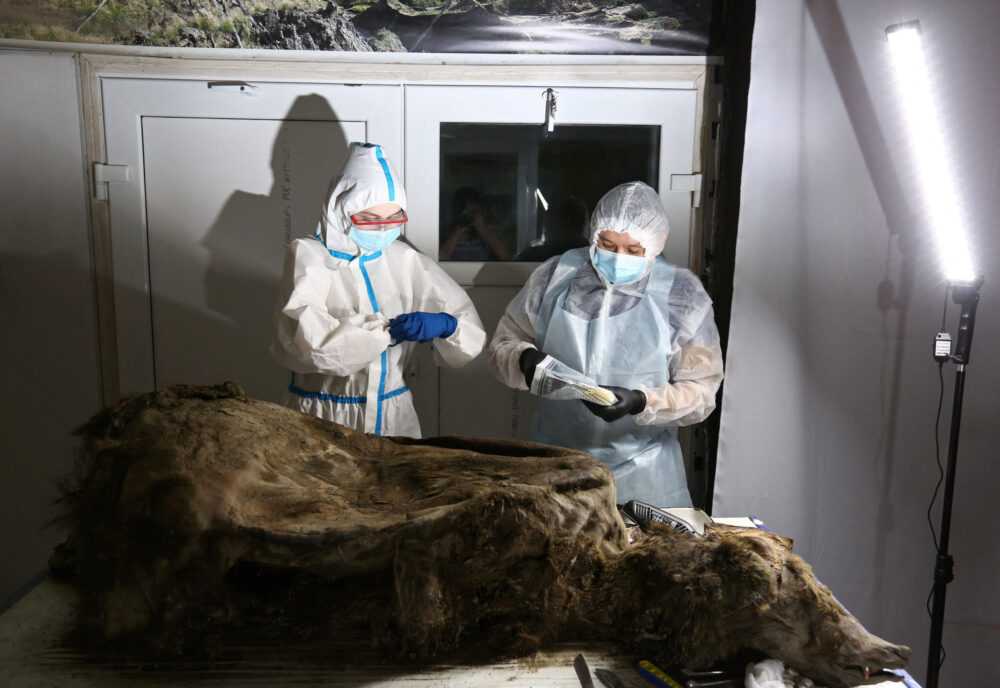The bear, unearthed in 2020, was originally assumed to be an extinct cave bear that dated back at least 22,000 years. But a new necropsy reveals it is actually a brown bear that lived 3,500 years ago.
ads

A perfectly preserved, mummified bear found entombed in the Siberian permafrost in 2020 isn’t what scientists thought it was, a new analysis reveals. It turns out that the eerily intact carcass is much younger than first assumed and belongs to an entirely different species.
Reindeer herders unearthed the remains, which include the bear’s intact skin, fur, teeth, nose, claws, body fat and internal organs, on Bolshoy Lyakhovsky Island, a remote Russian island located in the East Siberian Sea. Researchers named it the Etherican bear, after the nearby Bolshoy Etherican River.

The Etherican bear was so well preserved that its stomach contents were still partly intact, which revealed that the bear had been dining on a mix of unidentified plants and birds, some of whose feathers were still inside the bear’s belly. This fits with what we know about living brown bears that are omnivores, meaning they have a mixed diet of plants and animals.

The researchers also removed the bear’s brain after cutting through its skull, which they hope to study in the future.
One of the biggest remaining mysteries about the Etherican bear is how it ended up on Bolshoy Lyakhovsky Island.

The island is currently separated from the mainland by around 31 miles (50 kilometers) of water, so the most likely explanation is that brown bears moved to the island when it was still connected by sea ice during the Last Glacial Maximum, according to Reuters. But if this was the case, then researchers would have expected to find many more brown bear remains on the island, which is a hotspot for paleontological treasures, including mammoth remains.







